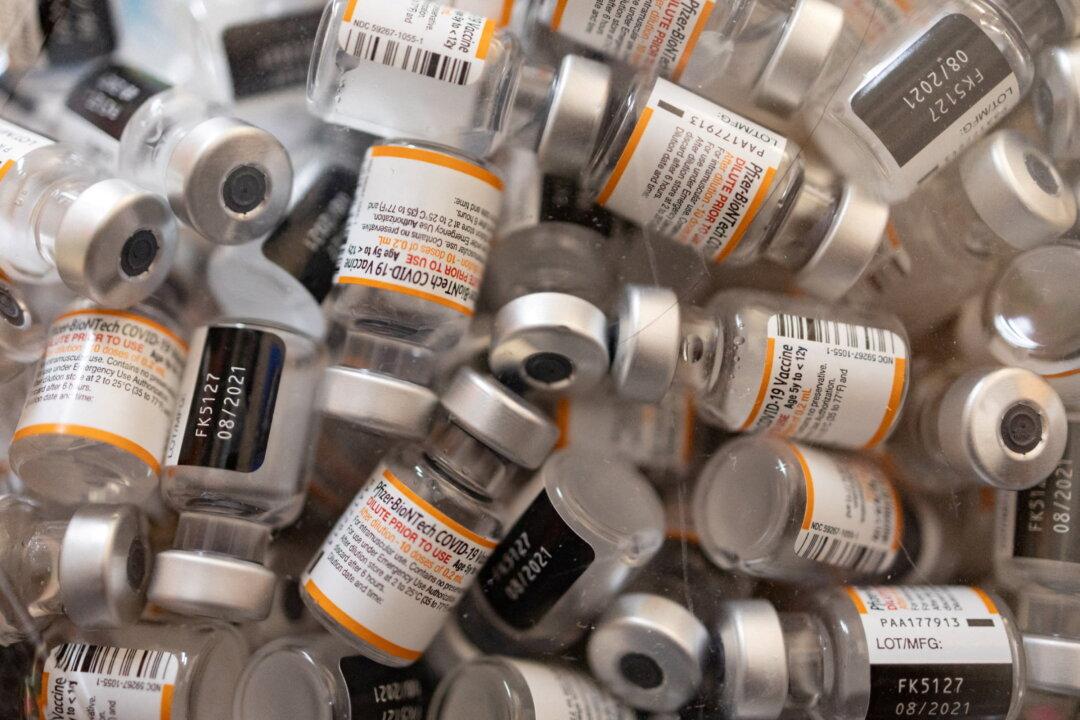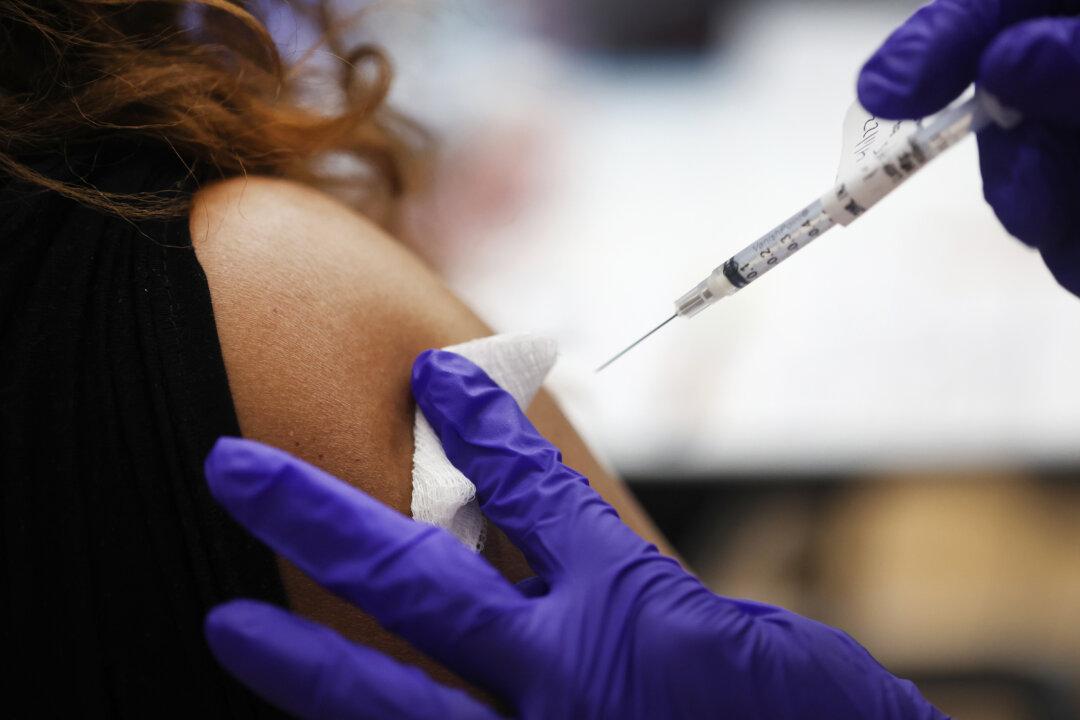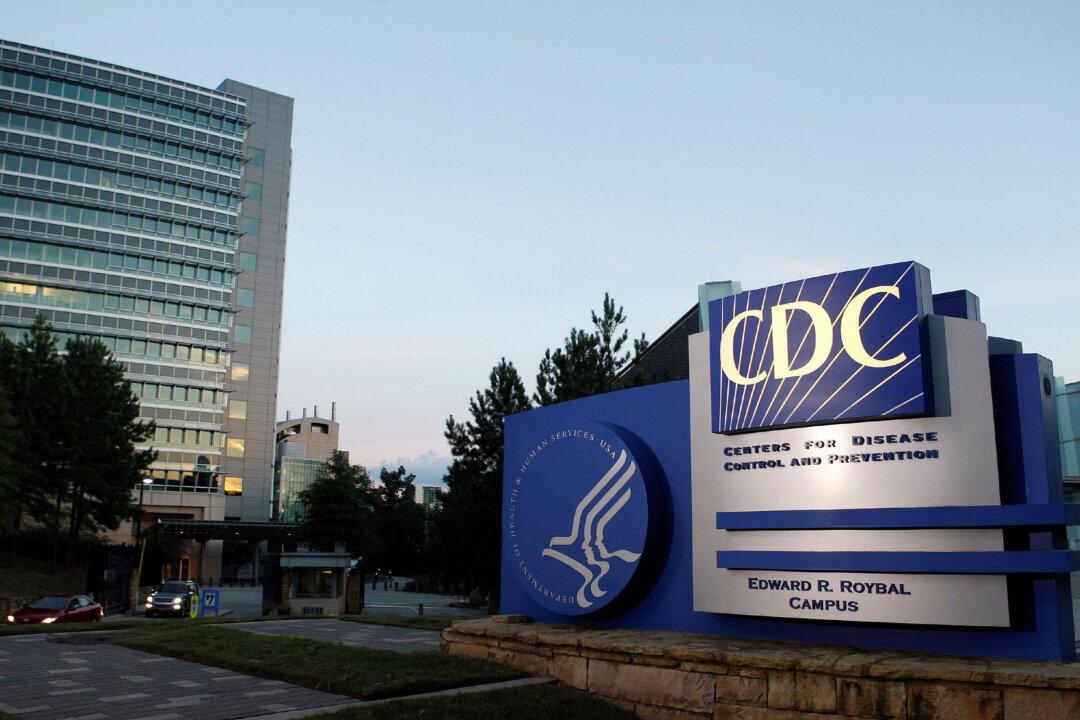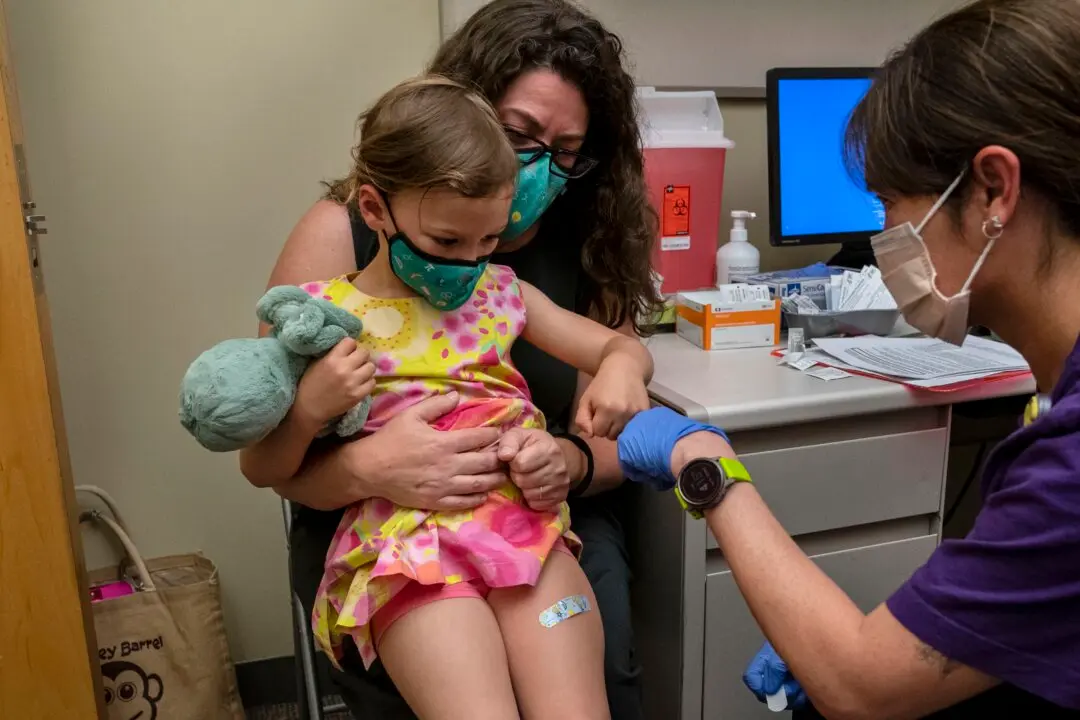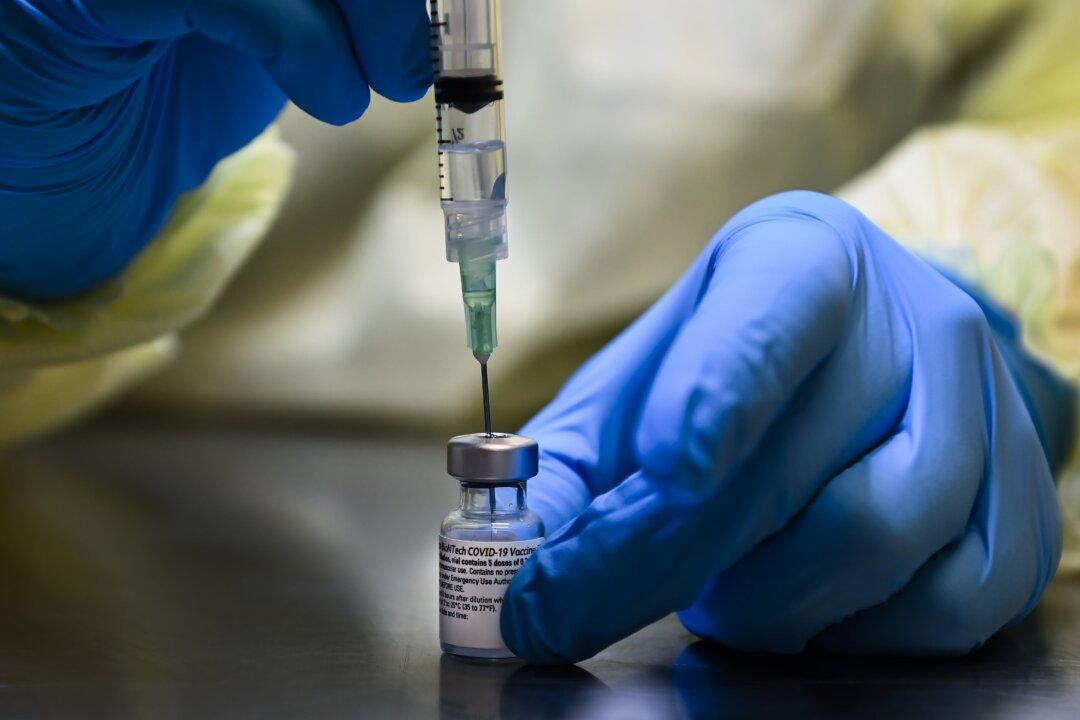The Centers for Disease Control and Prevention (CDC), in updated guidance on June 24, says that children as young as 6 months may simultaneously receive COVID-19 injections and other routine vaccines on the same day, although no safety study has been conducted by the vaccine manufacturers.
The guidance comes after the CDC recommended mRNA COVID-19 injections—a three-dose primary series from Pfizer or a two-dose primary series from Moderna—for children aged 6 months to 5 years on June 18.

